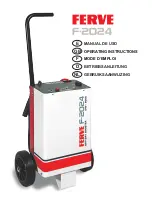
1-30
CAUTION:
If something is between an occupant and an air
bag, the bag might not inflate properly or it might
force the object into that person causing severe
injury or even death. The path of an inflating
air bag must be kept clear. Don’t put anything
between an occupant and an air bag, and don’t
attach or put anything on the steering wheel hub
or on or near any other air bag covering.
When should an air bag inflate?
An air bag is designed to inflate in a moderate to severe
frontal or near
-
frontal crash. The air bag will inflate
only if the impact speed is above the system’s designed
“threshold level.” If your vehicle goes straight into a
wall that doesn’t move or deform, the threshold level is
about 9 to 16 mph (14 to 26 km/h). The threshold level
can vary, however, with specific vehicle design, so that
it can be somewhat above or below this range. If your
vehicle strikes something that will move or deform,
such as a parked car, the threshold level will be higher.
The air bag is not designed to inflate in rollovers, rear
impacts, or in many side impacts because inflation
would not help the occupant.
In any particular crash, no one can say whether an air
bag should have inflated simply because of the damage
to a vehicle or because of what the repair costs were.
Inflation is determined by the angle of the impact and
how quickly the vehicle slows down in frontal or
near
-
frontal impacts.
Summary of Contents for 2002 Express
Page 1: ......
Page 6: ...v ...
Page 7: ...vi Model Reference This manual covers these models Passenger Van Cargo Van Cab and Chassis ...
Page 258: ...5 27 2 Loosen the plastic nut caps 3 Remove the center cap ...
Page 306: ...6 39 3 Remove the nuts with a deep socket wrench 4 Remove the hidden upper nuts ...
Page 327: ...6 60 GM Vehicle Care Appearance Materials ...
Page 398: ...7 59 Maintenance Record DATE ODOMETER READING SERVICED BY MAINTENANCE PERFORMED ...
Page 399: ...7 60 Maintenance Record DATE ODOMETER READING SERVICED BY MAINTENANCE PERFORMED ...
















































